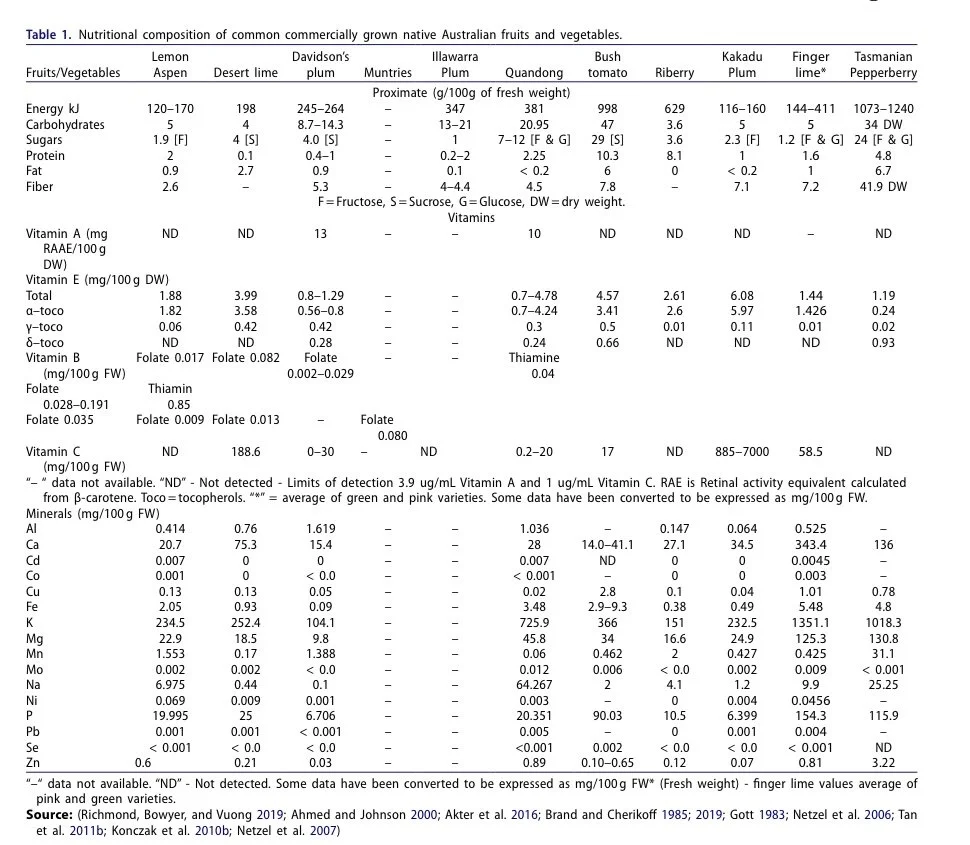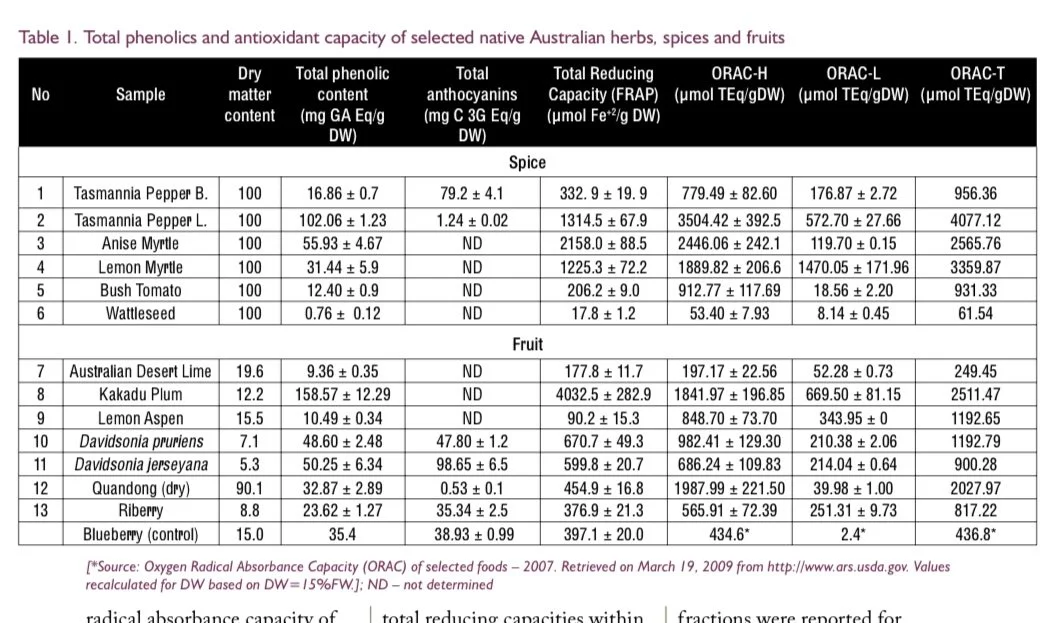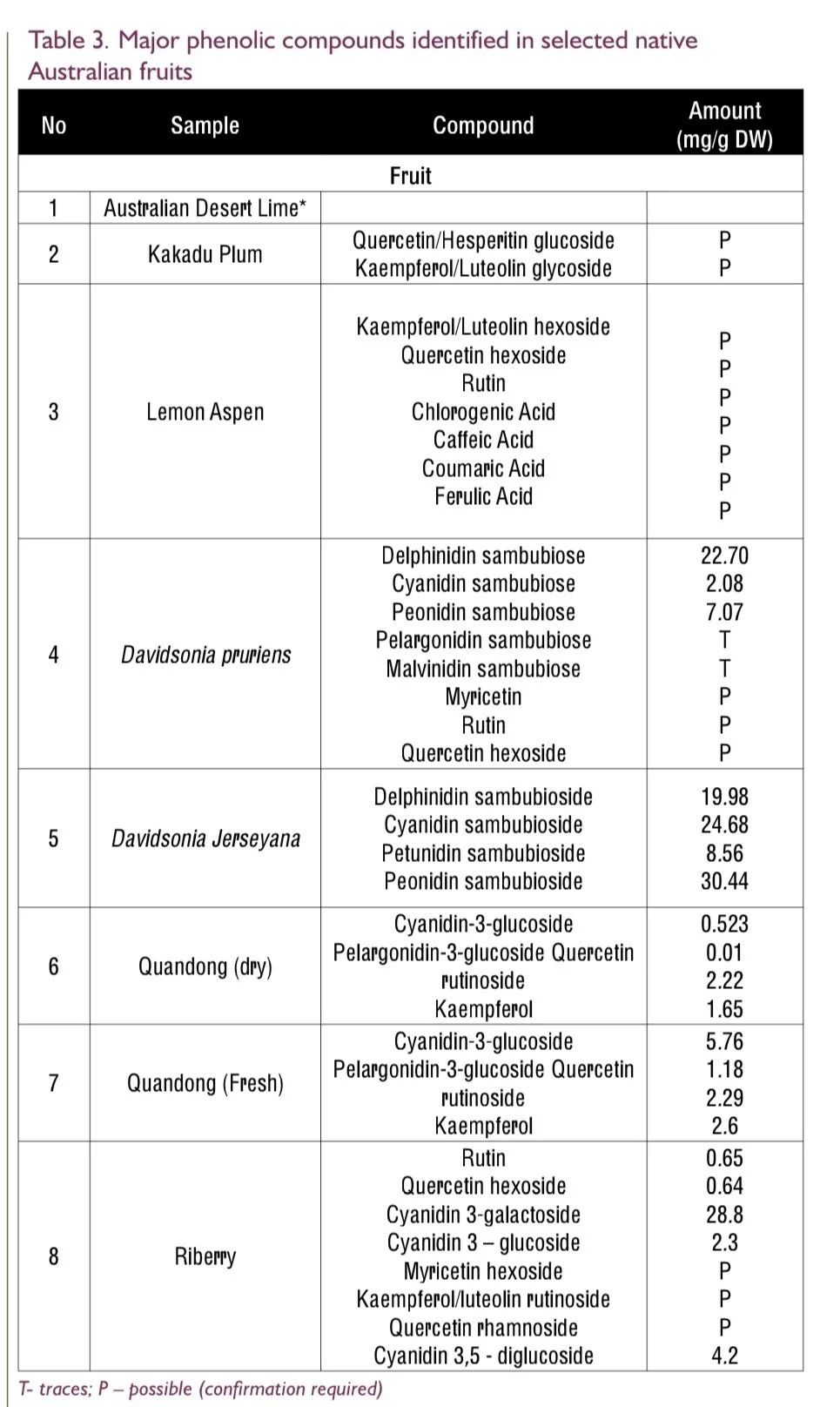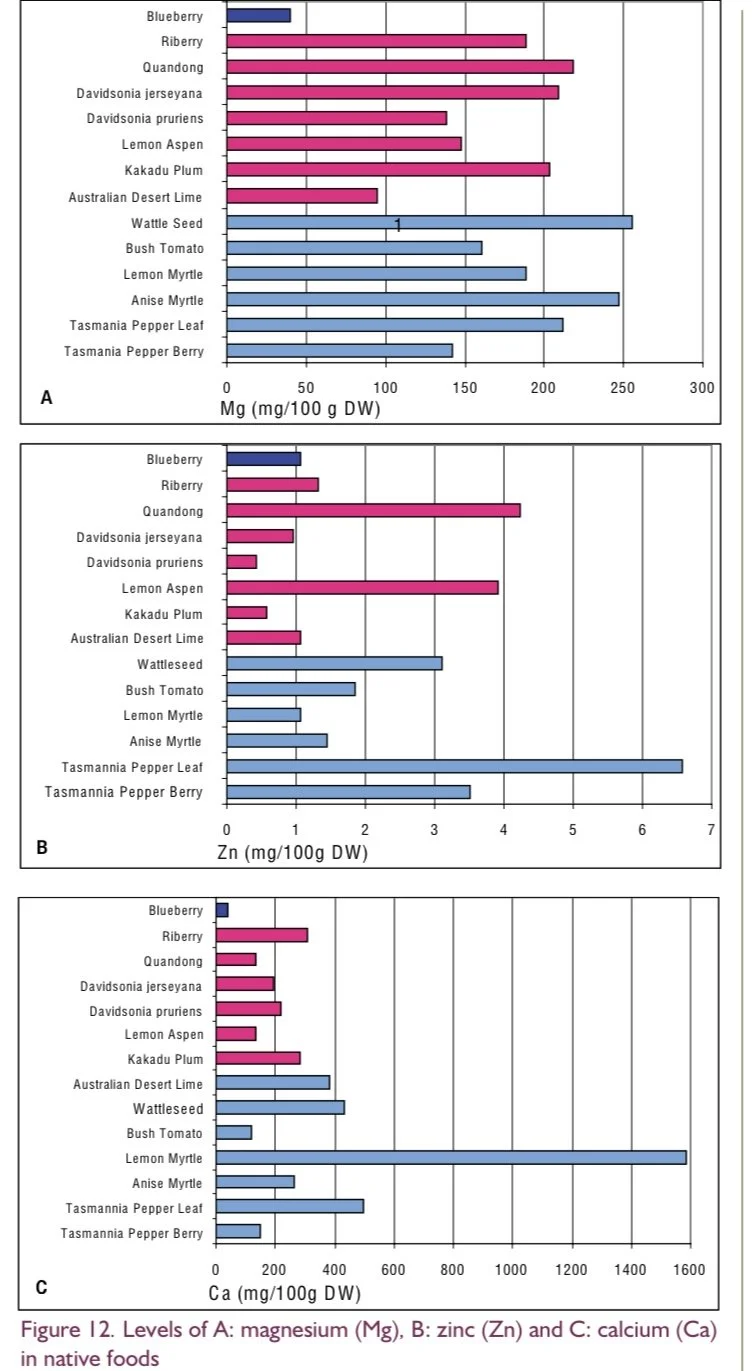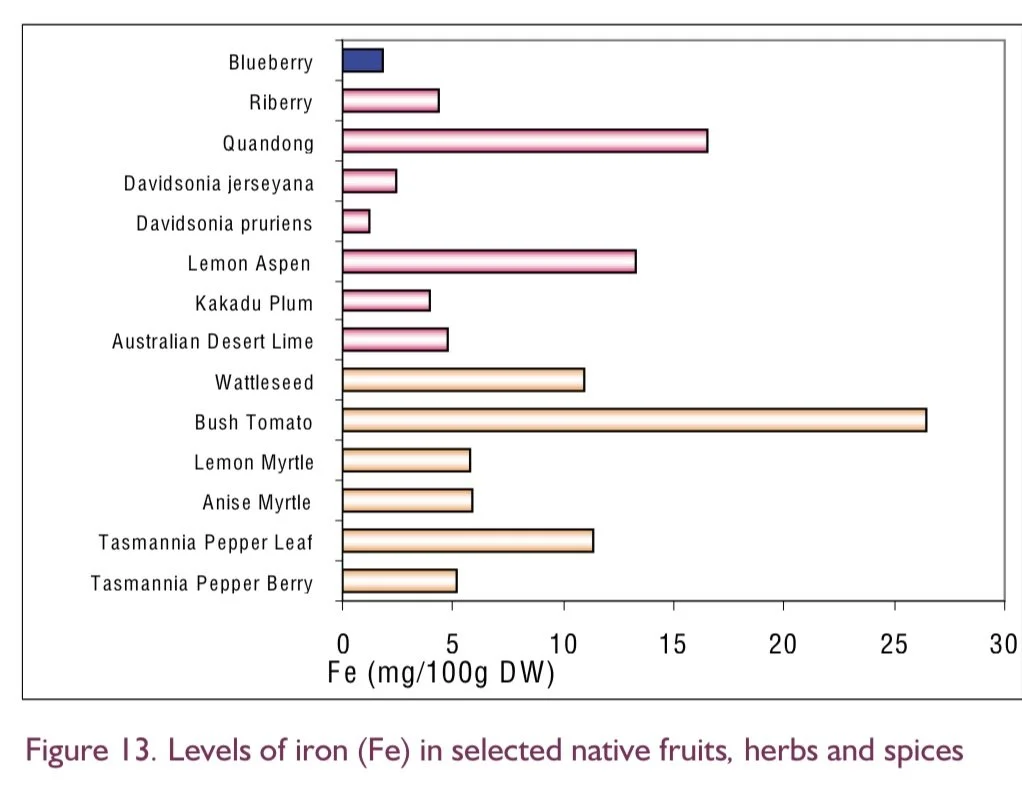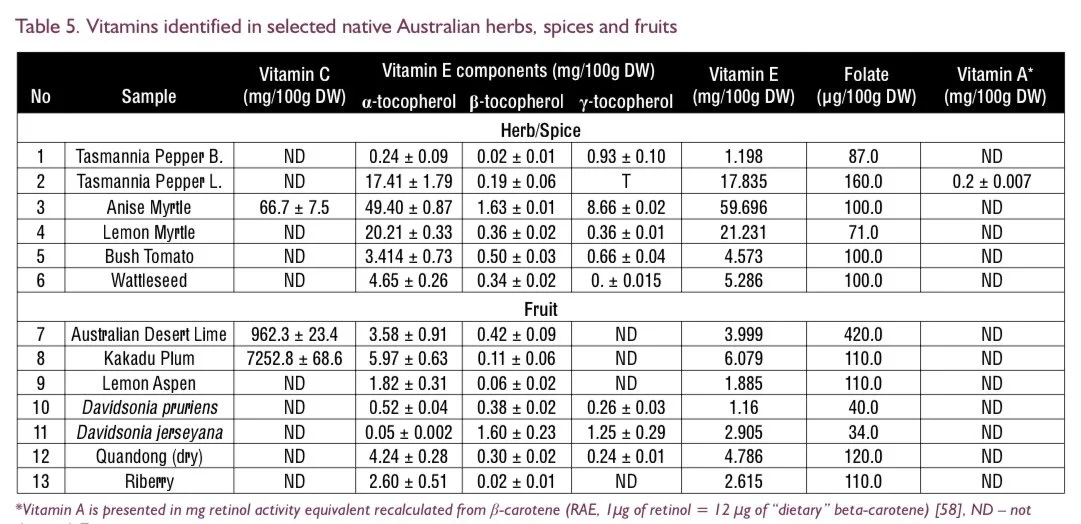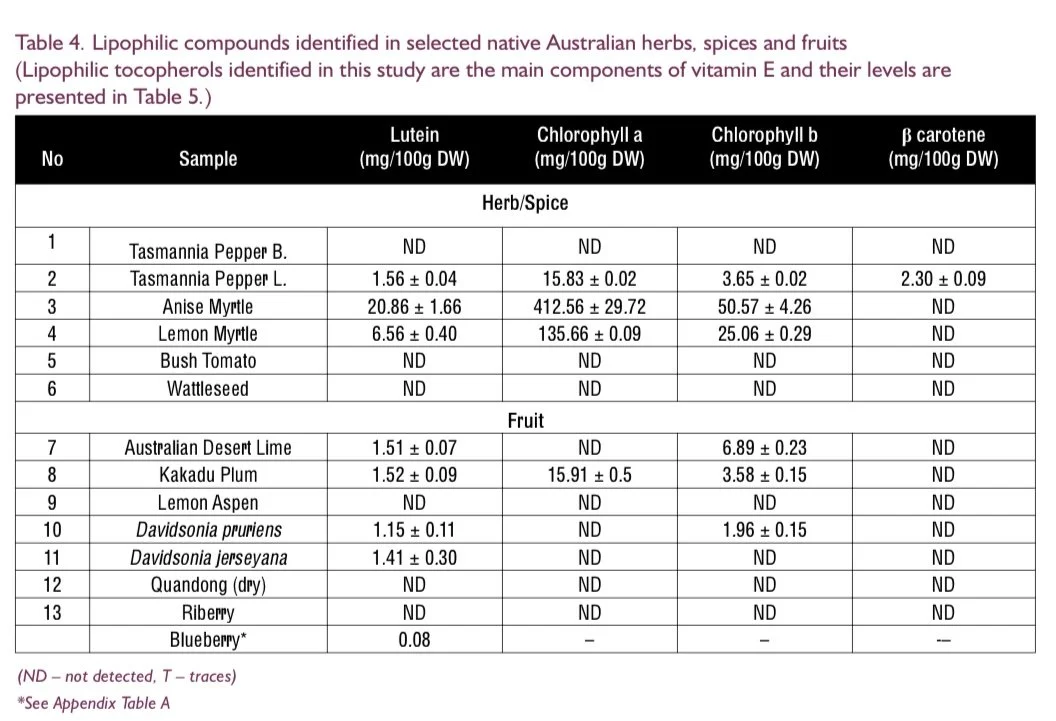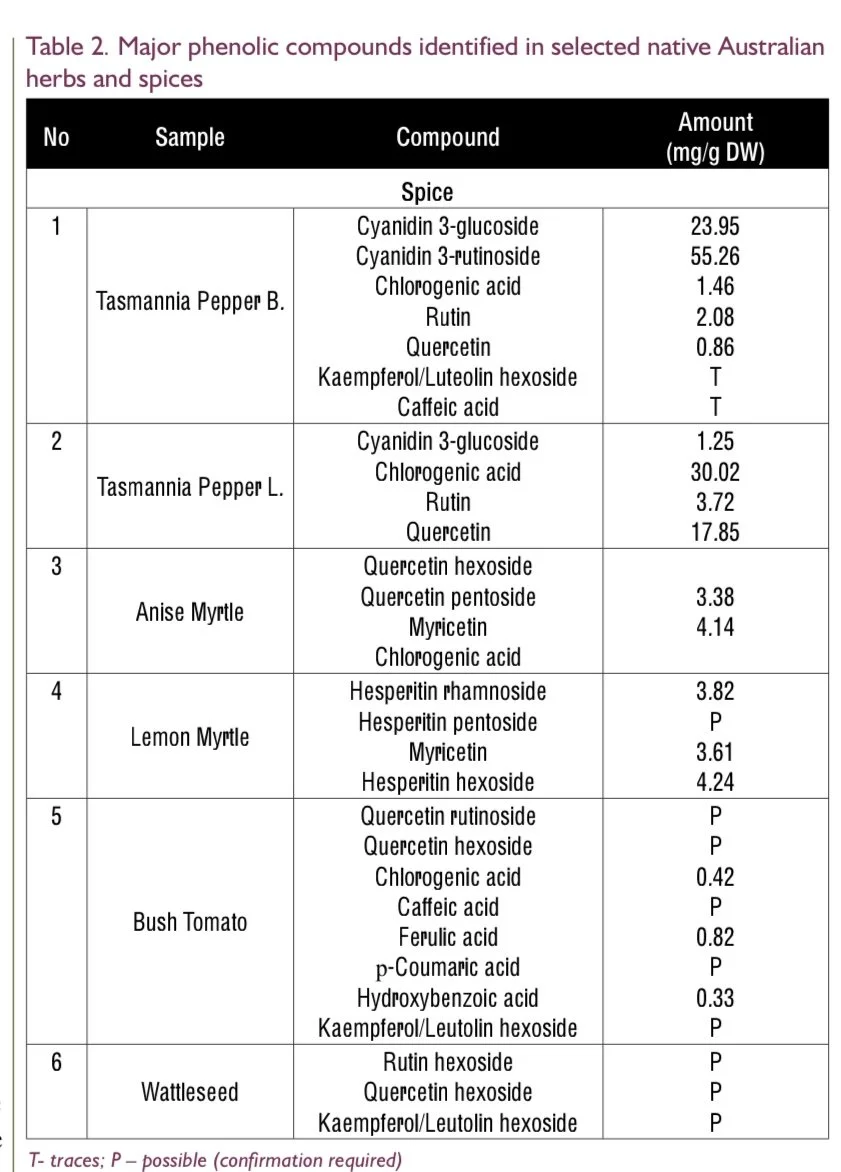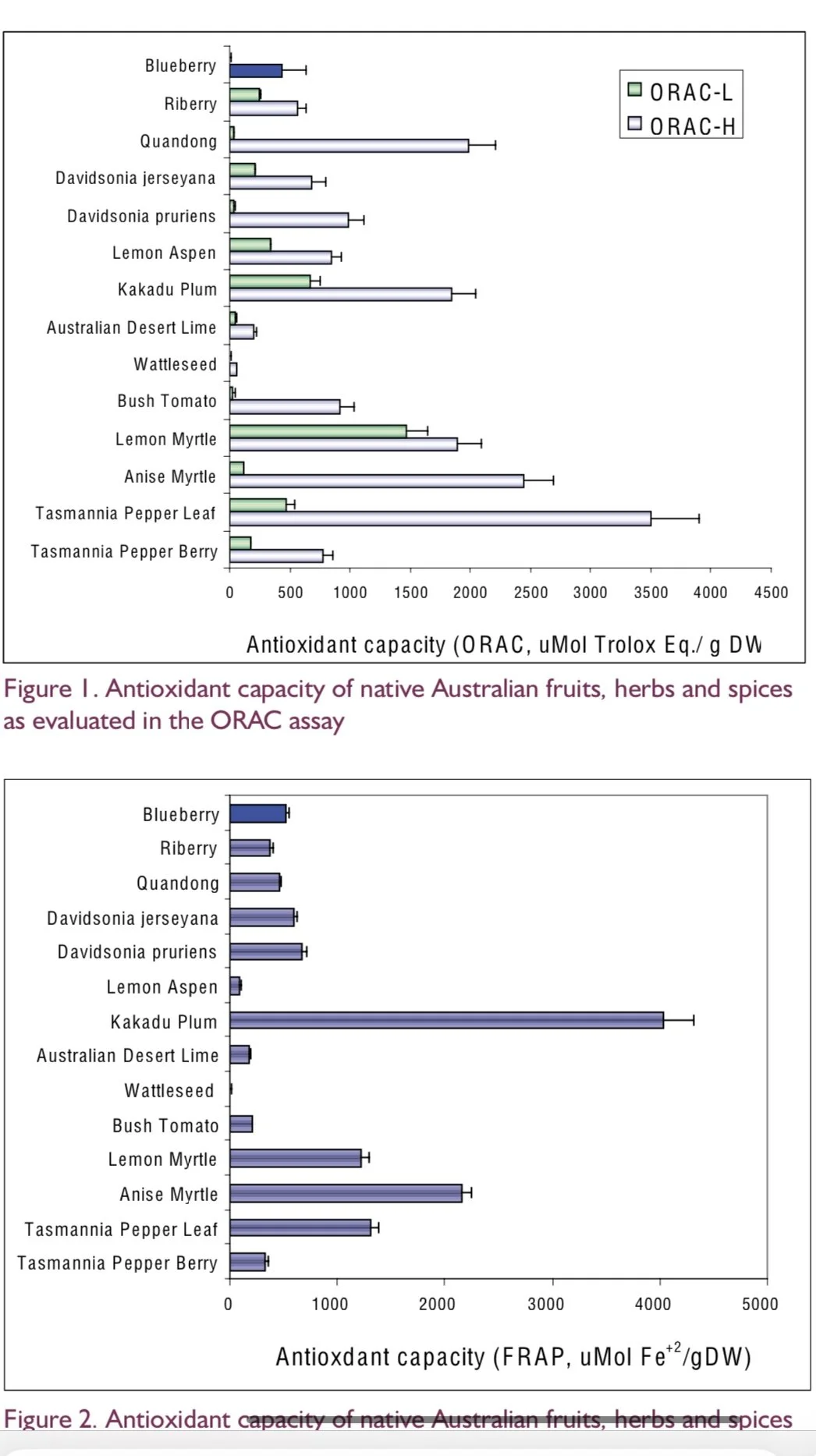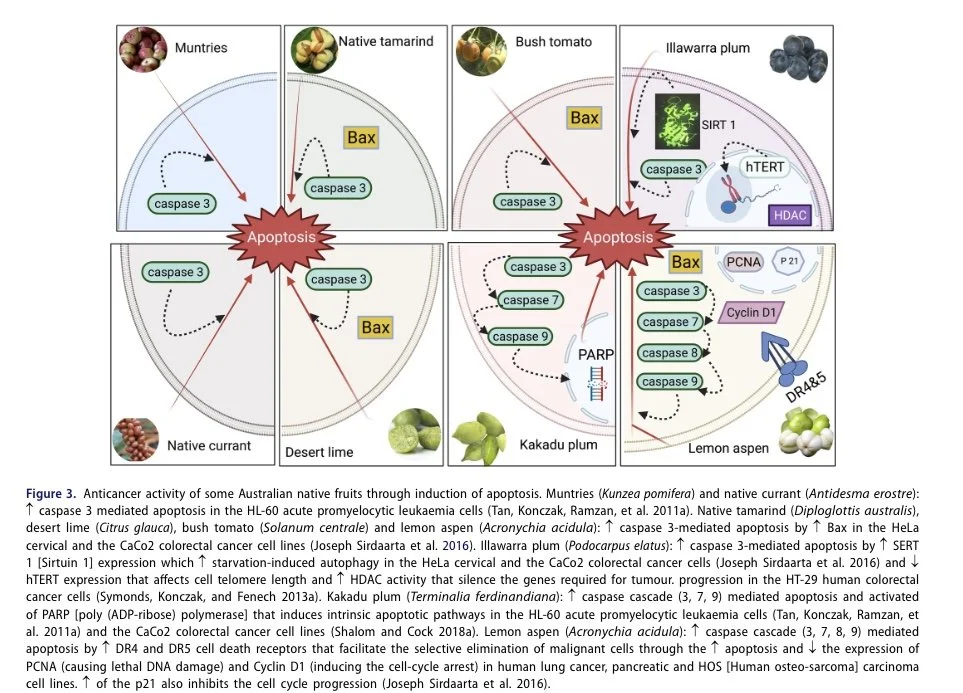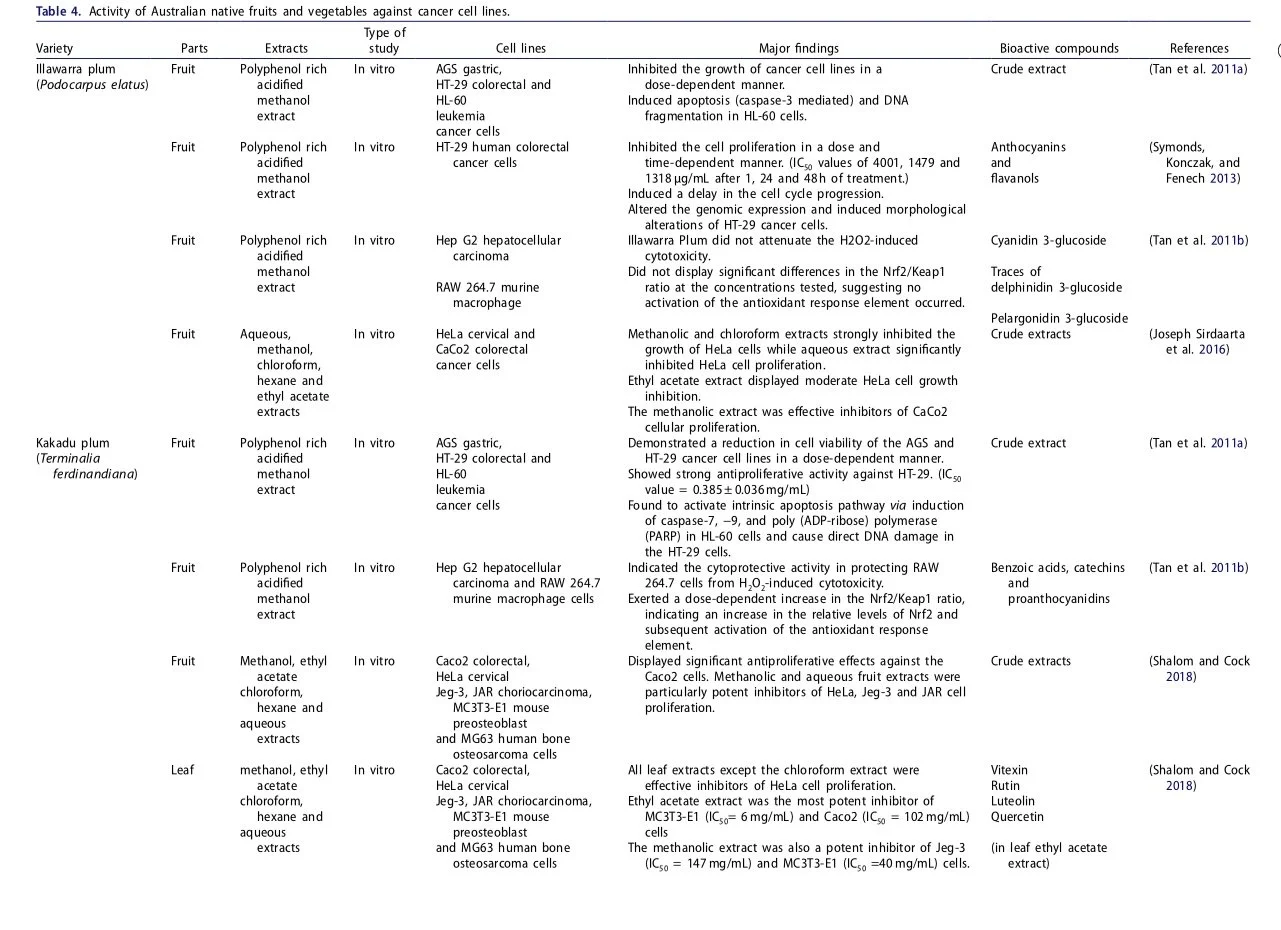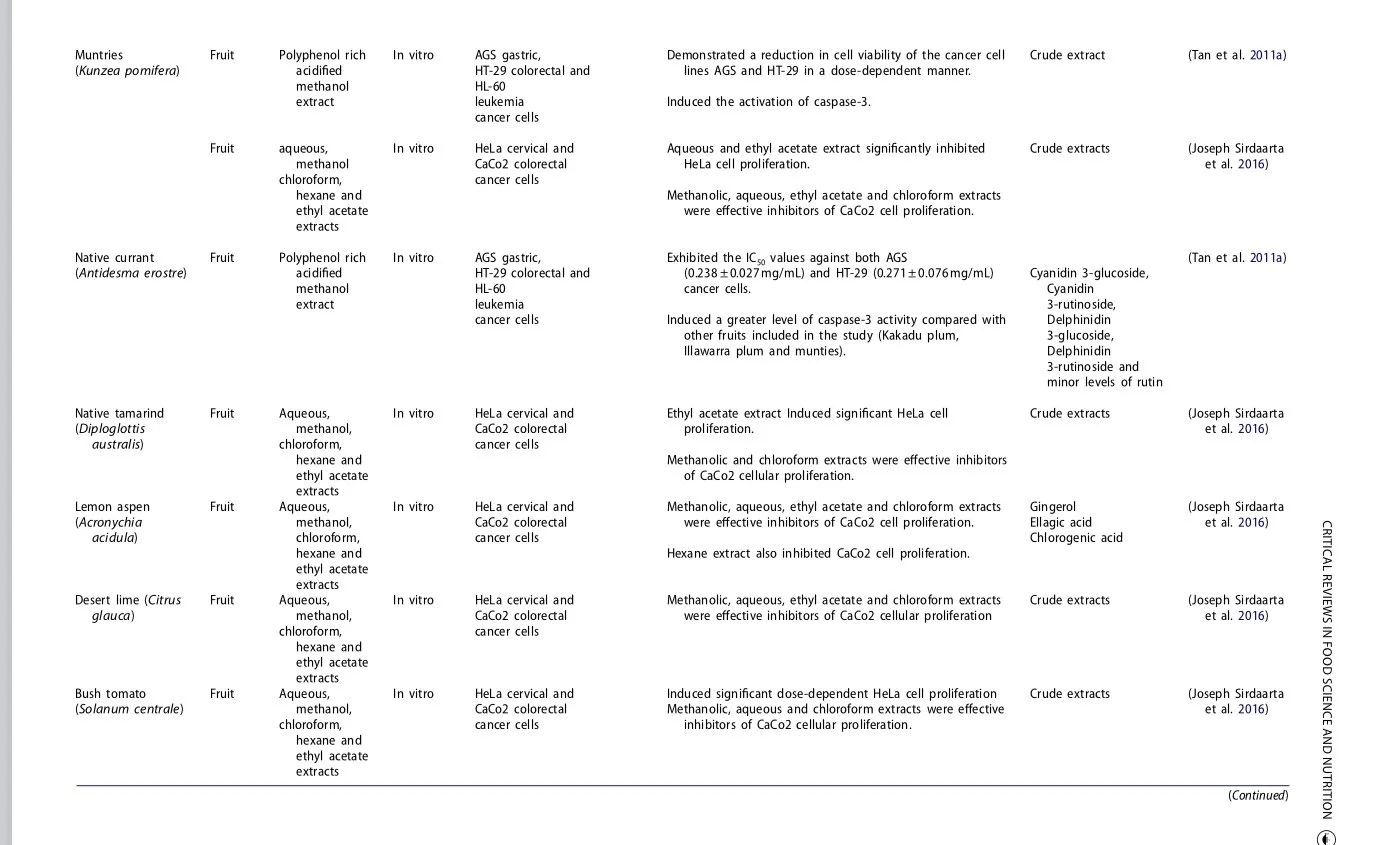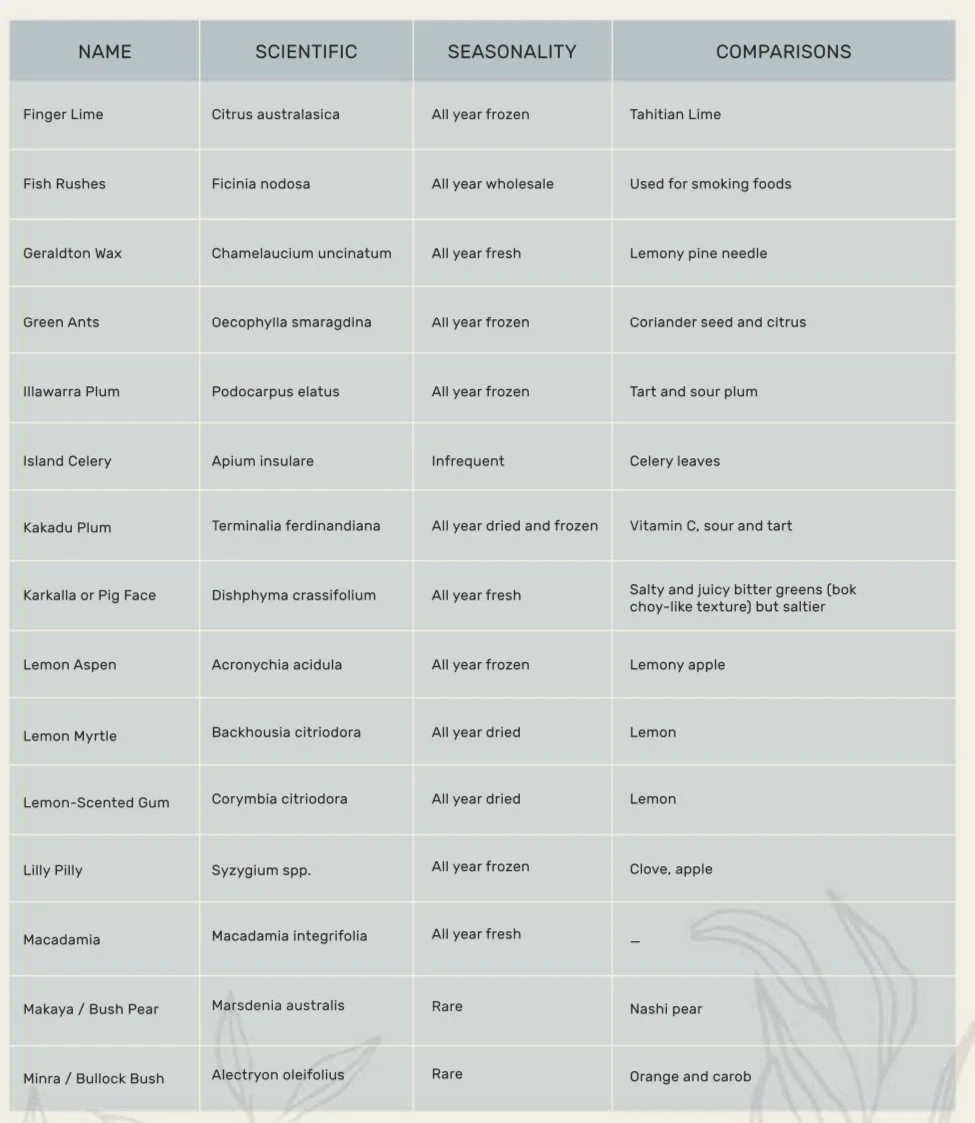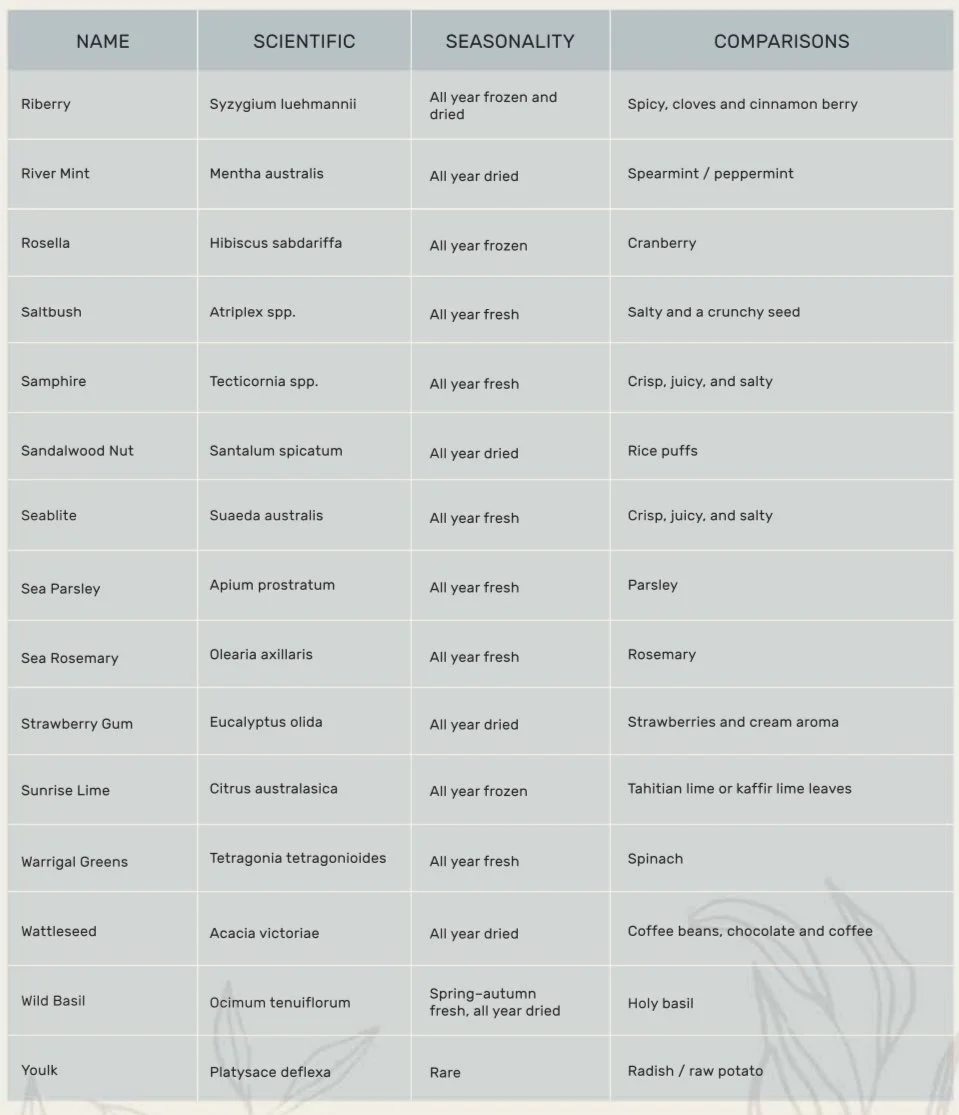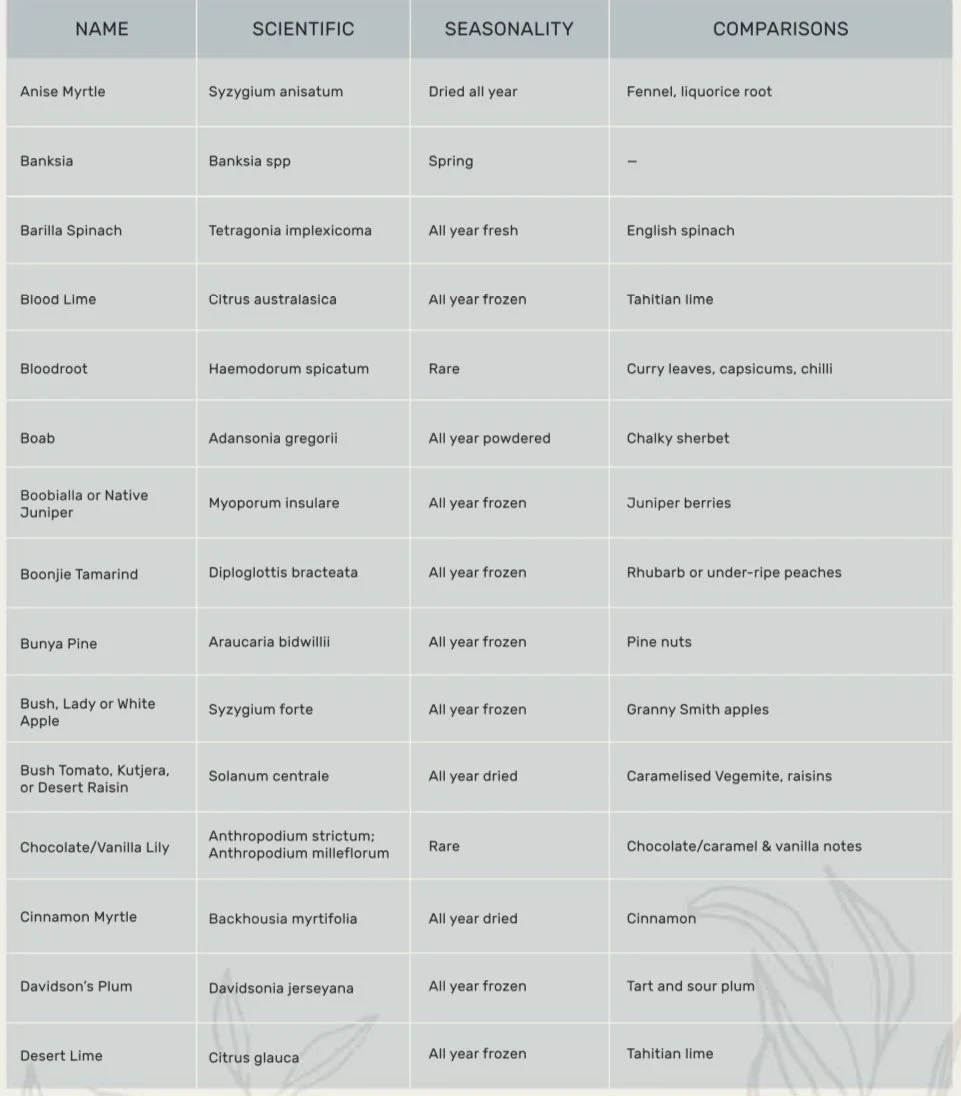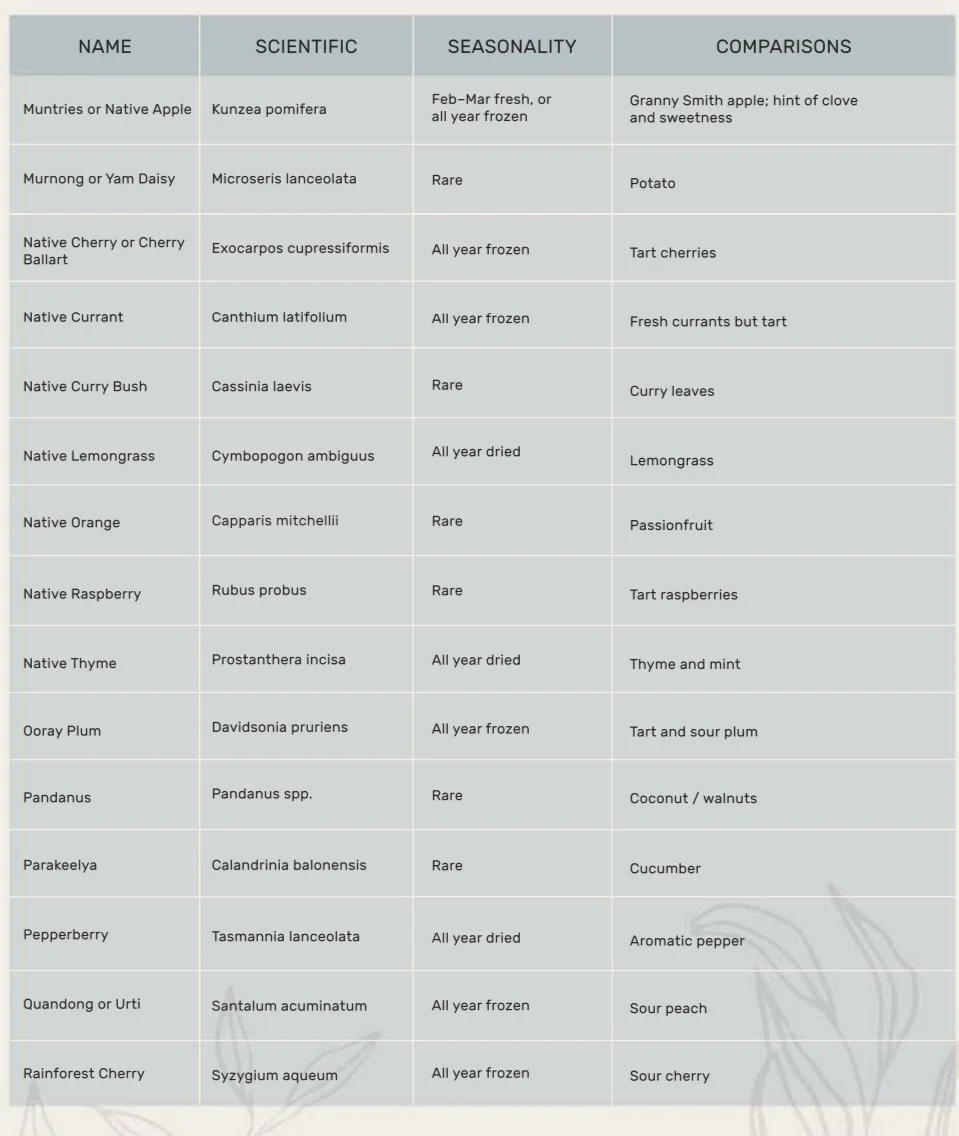Australian Superfoods!
Australia is in a unique position we have animals and plants that cannot be found anywhere else in the world due to our geographical isolation. This has meant animals and plants have had to develop in isolation into something quite special and unique. Due to the vast conditions of this land the plants have had to develop strong abilities to survive which has endued them unique and exceptional attributes. A lot of which we are just beginning to understand in this modern world and how they could provide medicinal benefits. This knowledge of the land and its plants was held for thousands of years by the aboriginal Australians who are the custodians of this beautiful land I get the privilege to live on and feel so strongly connected to. My history personally is not an Aboriginal one but an ancestry of 5 generations of convicts and settlers in this land.
I would like to acknowledge and pay my respects as to the traditional custodians of country across Australia and honour the rich history, resilience of the people and endless wisdom of Aboriginal and Torres Strait Islander people. I pay my respects to elders past and present. And I would like to acknowledge and recognise that our First nations people were the original farmers and caretakers of this land and this sovereignty has never ceded. Always was and always will be, Aboriginal land.
I just have the privilege to share this land and history- so I want this to be said before we dive into the amazing Superfoods!
The benefits of these plants are only just being shown in modern research even though traditional it was well known. These food are putting other superfoods around the world to shame with the constituents and nutrients they are composed of. Eucalyptus is well known for its benefits but cannot be consumed as it is poisonous. But there are:
over 5000 species of native foods used by aboriginal peoples
And below we will explore the few with significant research into them so far.
I would love to see these foods available publicly in the stores like coles and woolies widely accessible, affordable and part fo the standard diet just like European fruits and vegetables. And once you learn about these few you will understand why!
And I can’t wait to see what science reinforces around these amazing foods.
What is a Superfood?
This term is thrown around all the time. Superfood is a term used to confer that there are health benefits resulting from exceptional nutrient density.
Blueberries are often used as the benchmark for defining whether a food fits into this category or not. So it is often used as a comparator.
They often contain antioxidants, fibre or fatty acids that are beneficial for health, minerals, vitamins and/or anti-inflammatory components.
Most commonly thought of superfoods include:
blueberries, strawberries, raspberries, blackberries, cranberries
dark green easy vegetables (kale, swiss chard, collard greens, turnips, spinach)
green tea
eggs
legumes
nuts and seeds
kefir & yougurt
garlic
olive oil
ginger
turmeric
salmon
avocado
sweet potato
mushrooms
seaweed
Australian Superfoods
At the moment foods that are showing benefits are being put to shame by the Aussie superfoods.
These include:
Yam daisy (Microseris lanceolata) aka Murnong
Bush tomato (Solanum centrale)
Davidsons plum (Davidsonia pruiens)
Desert Lime (Citrus glauca)
Finger Lime (Citrus australasica)
Kakadu plum (Terminalla ferdinandiana)
Lemon aspen (Acronychia acidula)
Lemon myrtle (Backhousia citriadora)
Muntries (Kunzea pomifera)
Quandong (Santalum acuminatum)
Tasmanian pepper berry (Tasmannia lanceolata)
Riberry (Syzygium luehmanni)
Anise myrtle (Syzygium anisaturn)
Wattleseed (Acacia spp.)
Illawarra plum (Podocarpus elatus)
Macadaemia nuts ( feel like they need to be on the list!)
Kangaroo meat ( it has more protein and less fat than beef!)
Yam daisy (Microseris lanceolata) aka Murnong
As an example when compared to blueberries contains 18 x the iron (and we all know iron is important for making red blood cells in particular Harmaglobin, reducing fatigue, growth, boosting the immune system) 4x the copper/magnesium/calcium and 2x potassium of blueberries.
They are also really high in inulin which can help with regulating the metabolism of carbohydrates and fats therefore lowering blood glucose and improving insulin sensitivity. Therefore eating this will have positive effect on cardiovascular health, cholesterol balance and blood glucose regulation. As inulin is not easily digested by our body it is a great fibre source and prebiotic food to feed gut bacteria. So it assists microbiota balance, prevents constipation and assists with general gut health.
So why is this not in the fruit and vegetable section of supermarkets?
So lets put some data here for those comparisons!
Want to see just how amazing these foods are? Well see below i’m going to nerd out and get into the details.
Are you overwhelmed by that data! I am
So what were some stand outs for the nutrients in al of that!
Antioxidant capacity- Kakadu plum ( at least 8x blueberries) and Tasmanian Pepper leaf
Zinc - Tasmania Pepper leaf
Vitamin C -Kakadu plum
Magnesium- Wattleseed
Vitamin E- Anise myrtle
Folate - Australian desert lime
Vitamin A- Tasmanian Pepper Leaf
Iron- Bush tomato
Selenium- Wattleseed
Phosphate- Bush tomato
Sodium- Quandong dried
Potassium- Quandong dried
Manganese- Tasmanian pepper berry
Copper- Riberry
Calcium- Lemon myrtle
Anthrocyanins - Davidsons plum
Lutein-Anise myrtle
Chlorophyll- Anise myrtle
Beta carotine- Tasmanian pepper leaf
Quercetin- Tasmanian Pepper leaf ( see my anti-aging post on why this guy is important! )
Vitamin E
Compared to Western fruits (NUTTAB). For example, vitamin E levels on average are 10 times higher in native fruits (3.1 mg/100 g) than Western fruits (0.3 mg/100 g). The highest vitamin E level was recorded in Kakadu plum (6.1 mg/100 g), followed by quandong (4.8 mg/100 g) and bush tomato (4.6 mg/100 g) (Table 1). In comparison, the vitamin E content of Western plum is about 0.82 mg/100 g (highest values in western fruits), while cherry tomatoes have 0.2 mg/100 g vitamin E. Among the analyzed Australian native fruits, Tasmanian pepperberry has the lowest vitamin E content at 1.2 mg/100 g, which is still 10 times higher than the lowest value for vitamin E in Western fruits (banana 0.12 mg/100 g).
Australia has a higher level of solar UV radiation speculating that the high exposure to the sun could positively affect the levels of accumulation of phytochemicals, such as vitamin E in native plants.
Vitamin C
Finger lime, desert lime, and Kakadu plum have shown high levels of vitamin C, with up to 58.5, 188.6 and 7000 mg/100 g, respectively. Kakadu plum, also known as billy goat plum or salty plum, is one of the most popular Australian native fruits and is well-known to have the highest vitamin C concentration in the plant kingdom at up to 7000 mg/100 g DW.
Vitamin A
Vitamin A levels in Australian native fruits are found to be lower than other vitamins. With only Davidson’s plum and quandong were found to contain vitamin A in 13 and 10 mg/100 g retinol equivalents, respectively.
Calcium
Native fruits are notable for their calcium concentration and possess higher concentrations of the trace elements iron, copper, and zinc compared to Western fruits (Brand and Cherikoff Citation1985). Kakadu plum, for instance, is particularly high in minerals including magnesium, zinc, calcium, potassium, sodium, iron, phosphorus, manganese, copper, and molybdenum, and has shown high potassium:sodium ratio. Riberry was found to have a high calcium content.
Finger lime and Tasmania pepperberry were found to have the highest calcium content (34.34 and 13.6% Recommended Dietary Intake (RDI), respectively) as well as magnesium [30.56 and 31.9% RDI], phosphorus (15.43 and 11.59%RDI) and potassium (35.56 and 26.80%RDI) per 100 g (Richmond, Bowyer, and Vuong Citation2019). Comparatively, 100 g of Western limes has 2.2%RDI calcium, 2.68%RDI magnesium, 1.80%RDI phosphorus, and 3.95%RDI potassium (NUTTAB).
Magnesium
Green plum contains significantly higher levels of magnesium (120 mg/100 g) in comparison to mango (10 mg/100 g) and Burdekin plum (32 mg/100 g) (Fyfe et al. Citation2020).
Iron and minerals
Bush tomatoes were found to be rich in iron (6.1 mg/100 g) and copper (2.8 mg/100 g), and Tasmanian pepper berries are significantly higher in manganese (31.1 mg/100 g) compared to riberry which has the second-highest level of manganese (2.002 mg/100 g) (Richmond, Bowyer, and Vuong Citation2019).
Amino acids
A study by Lim et al. (Citation2020) showed that Davidson’s plum, finger lime and Tasmanian pepperberry had high amounts of essential amino acids. Lysine was found to be the most abundant essential free amino acid in Davidson’s plum (74.11%), finger lime (53.74%) and Tasmanian pepperberry (67.88%). Other amino acids including isoleucine, cysteine and histidine were also reported in relatively high levels in the three fruits. Furthermore, Davidson’s plum had 11, finger lime had 19 and Tasmanian pepperberry had 14 free amino acids (Lim et al. Citation2020).
Polyphenols
Tasmanian pepperberry (21.13 μmol/g FW) and Illawarra plum (19.39 μmol/g FW) were abundant in anthocyanins, a subtype of the polyphenols, which was higher than that of any fruit in the study as well as most well-known berries. The anthocyanin mixtures of both native fruits were predominated by cyanidins, the most common anthocyanins found in food (Netzel et al. Citation2006). Illawarra plum was also reported to have a high content of anthocyanin-rich phenolics in other studies (Netzel et al. Citation2007; Symonds, Konczak, and Fenech Citation2013).
Chlorophyll
Konczak and Roulle (Citation2011) demonstrated that the lipophilic fraction of Kakadu plum rich in chlorophyll a and b, α-tocopherol and lutein exhibited 26.66% activity in the ORAC assay which was comparable to avocado with 28.6% activity (Konczak and Roulle Citation2011).
Western fruits are considered a poor source of lipophilic antioxidants (Prior et al. Citation2003).Several studies have reported that in addition to vitamin E, different Australian native plants consist of potent phenolic antioxidants.
What are the implications of this for health and preventing disease?
Anti-cancer
Studies have shown that including antioxidant-rich fruits and vegetables in the diet can reduce the risk of intracellular oxidative stress-related chronic diseases and cancer (Block, Patterson, and Subar Citation1992; Jideani et al. Citation2021).
Previous epidemiological studies have suggested that dietary phytochemicals from fruits and vegetables can significantly reduce the occurrence of many cancers (Block, Patterson, and Subar Citation1992).
The in vitro studies described demonstrate that phytochemicals in Australian native fruits and vegetables naturally act as antioxidants to reduce cellular oxidative stress, disrupt proliferative signaling, and induce the cell cycle arrest leading to apoptosis in a wide range of cancer cell lines.
A study by Tan et al. (Citation2011a) examined the antiproliferative activity of polyphenols extracted from Illawarra plum, Kakadu plum, muntries, and native currant against a panel of cancer and normal cell lines containing AGS (gastric adenocarcinoma), HT-29 (colorectal adenocarcinoma), HL-60 (acute promyelocytic leukemia), CCD-18Co (colon normal), Hs 738.St/Int (mixed stomach and intestine normal) and peripheral blood mononuclear cells (PBMCs). The authors reported that each fruit selectively inhibited the growth of cancer cell lines in a dose-dependent manner. Kakadu plum showed strong antiproliferative activity against the HT-29 with an IC50 value of 0.385 ± 0.036 mg/mL. All fruit extracts induced apoptosis (caspase-3 mediated) and DNA fragmentation in the HL-60 cells. In addition, Kakadu plum was found to activate the intrinsic apoptosis pathway. When testing natives against HeLa cervical adenocarcinoma and the CaCo2 colorectal adenocarcinoma cell lines. All the tested methanolic and chloroform extracts strongly inhibited the growth of the HeLa cells while only two of the aqueous extracts (muntries and Illawarra plum) significantly reduced the HeLa cell proliferation in a dose-dependent manner. A study by Symonds, Konczak, and Fenech (Citation2013) reported that anthocyanin-rich Illawarra plum extract inhibited HT-29 cell proliferation in a dose and time-dependent manner. These findings indicated that the Illawarra plum extract may induce cell death of HT-29 via apoptotic pathways and possibly induced autophagy (Symonds, Konczak, and Fenech Citation2013). Overall, the anthocyanin-rich Illawarra plum inhibited cell proliferation by blocking signal transduction pathways, regulating gene expression, and inducing apoptosis.
The current literature does not report any direct in vivo studies exploring the anticancer activity of Australian native fruits and vegetables. However, the major phytochemicals present in these fruits and vegetables have been investigated in isolation against different in vivo models of cancer. This section underlines the key phytochemicals (that are also reported in Australian native fruits and vegetables) with potent in vivo anticancer activity.
The flavonol quercetin has been extensively studied against several cancer types in vivo and it is highly abundant in Illawarra plum (Symonds, Konczak, and Fenech Citation2013), Kakadu plum (Shalom and Cock Citation2018), and Davidson’s plum (Sakulnarmrat, Srzednicki, and Konczak Citation2014).
Furthermore, Zhou et al. (Citation2010) and Mouria et al. (Citation2002) demonstrated that quercetin exerted anti-proliferative and pro-apoptotic effects (Zhou et al. Citation2010), decreased primary tumor growth and prevented metastasis (Mouria et al. Citation2002) in a nude mouse model of pancreatic cancer.
The fruit and leaves of the Kakadu plum have shown very high levels of vitamin C (Gorman et al. Citation2020). Despite a few controversial opinions (Hoffer et al. Citation2008; Hoffer et al. Citation2015), there has been a growing scientific interest to investigate the therapeutic potential of vitamin C against cancer as demonstrated in several in vitro and in vivo studies (Reang et al. Citation2021).
Anti-inflammatory
The role of inflammation in the pathology of chronic diseases including rheumatoid arthritis, asthma, atherosclerosis, and neurodegenerative diseases is well-validated (Campbell Citation2004; Chen et al. Citation2018; Leyva-López et al. Citation2016). Additionally, inflammation also plays an integral part in cancer development and is defined as the seventh hallmark of carcinogenesis (Hanahan and Weinberg Citation2011). Hence, many anticancer agents often have anti-inflammatory activity. Australian native fruits and vegetables that have been reported in the literature with anti-inflammatory activity.
Anti-diabetic
Australian fruits and vegetables may offer promising prospects for the isolation and identification of novel agents for the treatment of metabolic syndrome and diabetes. The Australian native fruits and vegetables studied to date for their anti-diabetic activity and the effects on metabolic syndrome are- Davidson’s plum, quandong, lilly pilly, quinine bush (Petalostigma banksii), yellow mangosteen (Garcinia dulcis), anise myrtle and Tasmanian pepperberry.
An in vivo study on high-carbohydrate and high-fat diet rats demonstrated the potential of Davidson’s plum to ameliorate the symptoms of metabolic syndrome. The fruit decreased abdominal fat and adipose cells size, reduced the level of triglycerides, and improved liver function (John, Mouatt, Majzoub, et al. Citation2019). Davidson’s plum was found to alleviate metabolic syndrome symptoms across multiple body systems, including the heart, liver, and bone (John, Mouatt, Majzoub, et al. Citation2019). It was anticipated that anthocyanins were the primary constituents responsible for this activity, however, it was also emphasized that additional polyphenols, such as quercetin, may act synergistically with anthocyanins to produce the observed changes to the body systems (John, Mouatt, Majzoub, et al. Citation2019).
Quandong is an effective inhibitor of the pancreatic lipase (Sakulnarmrat, Srzednicki, and Konczak Citation2014). Pancreatic lipase is one of the main digestive enzymes that break down dietary carbohydrates and lipids in the human digestive system. Therefore, inhibition of pancreatic lipase is an attractive approach for the treatment of high blood sugar and obesity (Buchholz and Melzig Citation2016). Further studies are required to investigate its antidiabetic activities.
Antihyperglycemic, antihyperlipidemic and antioxidant activities of the oral administration of the aqueous extract of lilly pilly fruit (100 mg/kg) have recently been evaluated in streptozotocin-induced diabetic rats (Konda et al. Citation2019). The results showed that the fruit extract has a potential effect on oxidative stress, glycemic control, and dyslipidaemia. It improved insulin secretion via β-cell restoration capacity (Konda et al. Citation2019). The leaves of the plant were also suggested to have potential anti-diabetic properties
It has been observed that the anise myrtle plant contributed to the modulation of diabetic neuropathy through the regulation of digestive enzymes that are linked to the T2DM (Deo et al. Citation2016).
Illawarra plum, Kakadu plum, and bush tomato were reported to have high antioxidant and phenolic contents. Although there are no direct reports on these fruits and vegetables related to their effects on T2DM and metabolic syndrome, several studies have demonstrated that polyphenols can interfere with enzymatic activities of α-glucosidase and α-amylase in glucose metabolism. The inhibition of these key enzymes of glucose metabolism can reduce the absorbance of carbohydrates from the gut and ultimately reduce the blood glucose (McDougall et al. Citation2005). Similarly, as aforementioned Illawarra plum and Kakadu plum have been linked with anti-inflammatory activity.
Anti-microbial
Kakadu plum displayed antibacterial activity against both reference and clinical strains of Acinetobacter baylyi and Pseudomonas aeruginosa with MIC values of >1000 µg/mL in the disk diffusion assay. The extracts exhibited no toxicity. Evaluated the antibacterial activity of different solvent extracts of Kakadu plum against Bacillus anthracis (the pathogen responsible for anthrax) and it was effective. It also was shown ti inhibit MRSA *(staph aureus) however the extracts were unable to inhibit the growth of β-lactam-resistant E. coli. Do you know how amazing that is? Given all the antibiotic resistance occurring?
Tasmanian pepperberry (methanolic, aqueous, and ethyl acetate) inhibited the growth of the tested Gram-negative and Gram-positive bacterial strains (Winnett et al. Citation2014).
Gut Microbiota
Tasmanian pepperberry (methanolic, aqueous, and ethyl acetate) inhibited the growth of the tested Gram-negative and Gram-positive bacterial strains (Winnett et al. Citation2014). Carbohydrate- and fat-rich diets disturb the gut microbial composition through a reduced concentration of the Bacteroidiaspecies and an increase in the presence of Clostridia species (John, Mouatt, Majzoub, et al. Citation2019). Supplementation of yellow mangosteen was observed to attenuate these alterations to the gut microbiome in rats and effectively reduce the risk of metabolic syndrome and other inflammatory processes as a result of these changes (John, Mouatt, Majzoub, et al. Citation2019). Davidson’s plum. This native fruit is rich in anthocyanin, which also exerted anti-obesity effects in rats via the regulation of the gut microbiome composition (John, Mouatt, Majzoub, et al. Citation2019). The findings elucidated that anthocyanin extracts led to increased growth of Akkermansia muciniphila, which has a positive influence on the gut microbiome through improved metabolic outcomes, such as a reduction in the gut and systemic inflammation, and an increase in gut mucin secretion in rats (John, Mouatt, Majzoub, et al. Citation2019).
Whilst all this is exciting what’s even more amazing is how many foods there are and that you can start using in your cooking today.
Below is from Shop natives at Warndu. A great guide to get using these ingredient in your home and what it compares to with flavours you might be more used to using in cooking.
The implications of this is huge! For so many health conditions. I hope this has sparked your interest into looking into using Australian bush medicine in your general diet. Because food is medicine and these plants have helped to keep aboriginals healthy for thousands of years. The implications of these plants is not only in health but beauty applications as well.
References:
https://doi.org/10.1080/10408398.2022.2057913
https://eprints.utas.edu.au/23810/1/02%20McPhail%26Woodward%20F.pdf
https://www.academia.edu/1599675/Fructan_and_free_fructose_content_of_common_Australian_vegetables_and_fruit
https://anfab.org.au/edit/research_publications/Health%20Benefits%20of%20Australian%20Native%20Foods.pdf
https://www.tandfonline.com/doi/epdf/10.1080/10408398.2022.2057913?needAccess=true
https://cdn.shopify.com/s/files/1/0055/7462/3278/files/NativeIngredientSubtitutionGuide.pdf?v=1593989216&_kx=0CtCDFW3tXOwB0DZkXVV49BfXg01hpbCOi1fzprvHuo%3D.MX8MCR




